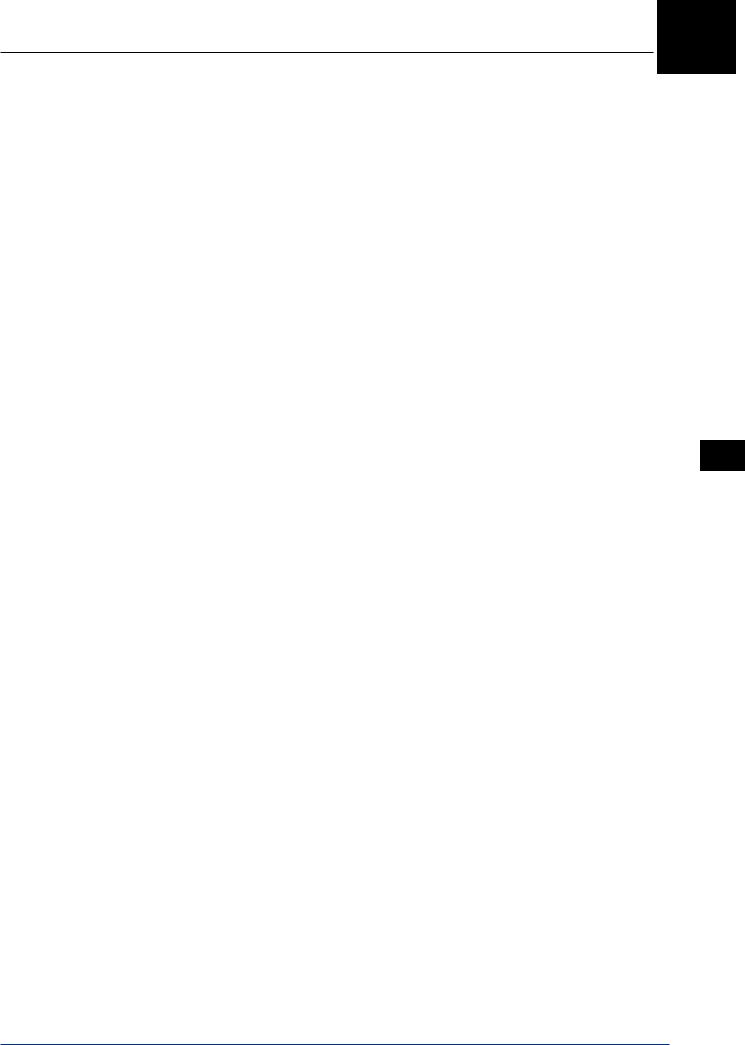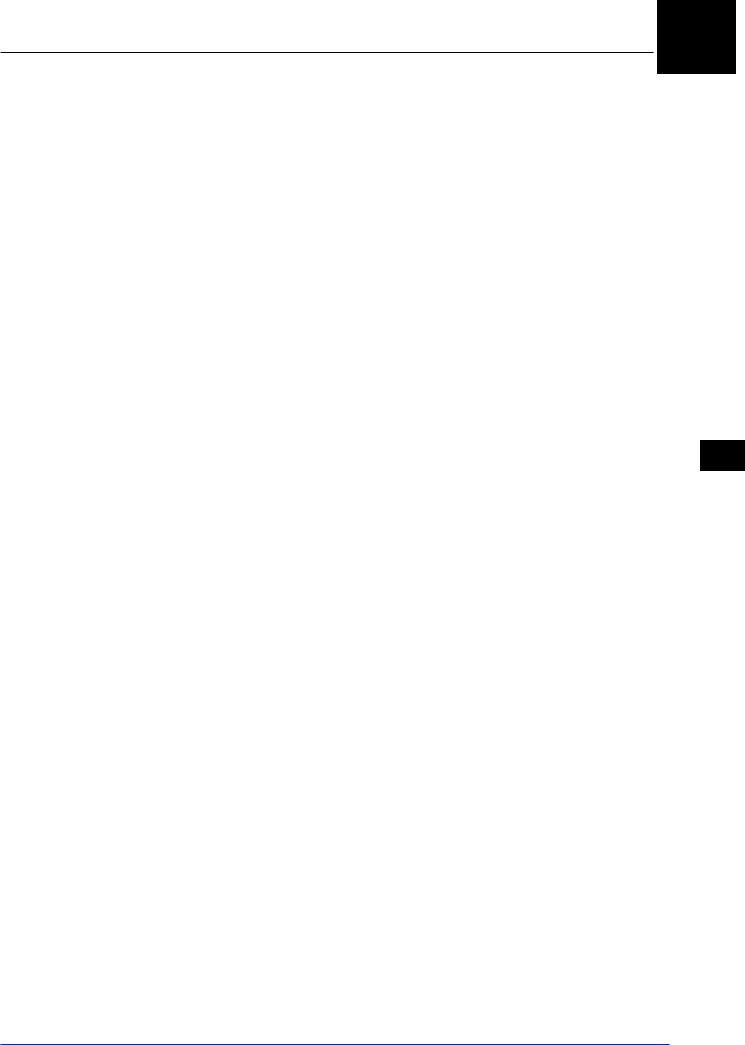
- •Textbook Series
- •Contents
- •1 Basic Concepts
- •The History of Human Performance
- •The Relevance of Human Performance in Aviation
- •ICAO Requirement for the Study of Human Factors
- •The Pilot and Pilot Training
- •Aircraft Accident Statistics
- •Flight Safety
- •The Most Significant Flight Safety Equipment
- •Safety Culture
- •Reason’s Swiss Cheese Model
- •The Five Elements of Safety Culture
- •Flight Safety/Threat and Error Management
- •Threats
- •Errors
- •Undesired Aircraft States
- •Duties of Flight Crew
- •2 The Circulation System
- •Blood Circulation
- •The Blood
- •Composition of the Blood
- •Carriage of Carbon Dioxide
- •The Circulation System
- •What Can Go Wrong
- •System Failures
- •Factors Predisposing to Heart Attack
- •Insufficient Oxygen Carried
- •Carbon Monoxide
- •Smoking
- •Blood Pressure
- •Pressoreceptors and their Function Maintaining Blood Pressure
- •Function
- •Donating Blood and Aircrew
- •Pulmonary Embolism
- •Questions
- •Answers
- •3 Oxygen and Respiration
- •Oxygen Intake
- •Thresholds of Oxygen Requirements Summary
- •Hypoxic Hypoxia
- •Hypoxic Hypoxia Symptoms
- •Stages/Zones of Hypoxia
- •Factors Determining the Severity of and the Susceptibility to Hypoxic Hypoxia
- •Anaemic Hypoxia
- •Time of Useful Consciousness (TUC)
- •Times of Useful Consciousness at Various Altitudes
- •Effective Performance Time (EPT)
- •Hyperventilation
- •Symptoms of Hyperventilation
- •Hypoxia or Hyperventilation?
- •Cabin Pressurization
- •Cabin Decompression
- •Decompression Sickness (DCS)
- •DCS in Flight and Treatment
- •Questions
- •Answers
- •4 The Nervous System, Ear, Hearing and Balance
- •Introduction
- •The Nervous System
- •The Sense Organs
- •Audible Range of the Human Ear and Measurement of Sound
- •Hearing Impairment
- •The Ear and Balance
- •Problems of Balance and Disorientation
- •Somatogyral and Somatogravic Illusions
- •Alcohol and Flying
- •Motion Sickness
- •Coping with Motion Sickness
- •Questions
- •Answers
- •5 The Eye and Vision
- •Function and Structure
- •The Cornea
- •The Iris and Pupil
- •The Lens
- •The Retina
- •The Fovea and Visual Acuity
- •Light and Dark Adaptation
- •Night Vision
- •The Blind Spot
- •Stereopsis (Stereoscopic Vision)
- •Empty Visual Field Myopia
- •High Light Levels
- •Sunglasses
- •Eye Movement
- •Visual Defects
- •Use of Contact Lenses
- •Colour Vision
- •Colour Blindness
- •Vision and Speed
- •Monocular and Binocular Vision
- •Questions
- •Answers
- •6 Flying and Health
- •Flying and Health
- •Acceleration
- •G-forces
- •Effects of Positive G-force on the Human Body
- •Long Duration Negative G
- •Short Duration G-forces
- •Susceptibility and Tolerance to G-forces
- •Summary of G Tolerances
- •Barotrauma
- •Toxic Hazards
- •Body Mass Index (BMI)
- •Obesity
- •Losing Weight
- •Exercise
- •Nutrition and Food Hygiene
- •Fits
- •Faints
- •Alcohol and Alcoholism
- •Alcohol and Flying
- •Drugs and Flying
- •Psychiatric Illnesses
- •Diseases Spread by Animals and Insects
- •Sexually Transmitted Diseases
- •Personal Hygiene
- •Stroboscopic Effect
- •Radiation
- •Common Ailments and Fitness to Fly
- •Drugs and Self-medication
- •Anaesthetics and Analgesics
- •Symptoms in the Air
- •Questions
- •Answers
- •7 Stress
- •An Introduction to Stress
- •The Stress Model
- •Arousal and Performance
- •Stress Reaction and the General Adaption Syndrome (GAS)
- •Stress Factors (Stressors)
- •Physiological Stress Factors
- •External Physiological Factors
- •Internal Physiological Factors
- •Cognitive Stress Factors/Stressors
- •Non-professional Personal Factors/Stressors
- •Stress Table
- •Imaginary Stress (Anxiety)
- •Organizational Stress
- •Stress Effects
- •Coping with Stress
- •Coping with Stress on the Flight Deck
- •Stress Management Away from the Flight Deck
- •Stress Summary
- •Questions
- •Answers
- •Introduction
- •Basic Information Processing
- •Stimuli
- •Receptors and Sensory Memories/Stores
- •Attention
- •Perception
- •Perceived Mental Models
- •Three Dimensional Models
- •Short-term Memory (Working Memory)
- •Long-term Memory
- •Central Decision Maker and Response Selection
- •Motor Programmes (Skills)
- •Human Reliability, Errors and Their Generation
- •The Learning Process
- •Mental Schema
- •Questions
- •Answers
- •9 Behaviour and Motivation
- •An Introduction to Behaviour
- •Categories of Behaviour
- •Evaluating Data
- •Situational Awareness
- •Motivation
- •Questions
- •Answers
- •10 Cognition in Aviation
- •Cognition in Aviation
- •Visual Illusions
- •An Illusion of Movement
- •Other Sources of Illusions
- •Illusions When Taxiing
- •Illusions on Take-off
- •Illusions in the Cruise
- •Approach and Landing
- •Initial Judgement of Appropriate Glideslope
- •Maintenance of the Glideslope
- •Ground Proximity Judgements
- •Protective Measures against Illusions
- •Collision and the Retinal Image
- •Human Performance Cognition in Aviation
- •Special Situations
- •Spatial Orientation in Flight and the “Seat-of-the-pants”
- •Oculogravic and Oculogyral Illusions
- •Questions
- •Answers
- •11 Sleep and Fatigue
- •General
- •Biological Rhythms and Clocks
- •Body Temperature
- •Time of Day and Performance
- •Credit/Debit Systems
- •Measurement and Phases of Sleep
- •Age and Sleep
- •Naps and Microsleeps
- •Shift Work
- •Time Zone Crossing
- •Sleep Planning
- •Sleep Hygiene
- •Sleep and Alcohol
- •Sleep Disorders
- •Drugs and Sleep Management
- •Fatigue
- •Vigilance and Hypovigilance
- •Questions
- •Answers
- •12 Individual Differences and Interpersonal Relationships
- •Introduction
- •Personality
- •Interactive Style
- •The Individual’s Contribution within a Group
- •Cohesion
- •Group Decision Making
- •Improving Group Decision Making
- •Leadership
- •The Authority Gradient and Leadership Styles
- •Interacting with Other Agencies
- •Questions
- •Answers
- •13 Communication and Cooperation
- •Introduction
- •A Simple Communications Model
- •Types of Questions
- •Communications Concepts
- •Good Communications
- •Personal Communications
- •Cockpit Communications
- •Professional Languages
- •Metacommunications
- •Briefings
- •Communications to Achieve Coordination
- •Synchronization
- •Synergy in Joint Actions
- •Barriers to Crew Cooperation and Teamwork
- •Good Team Work
- •Summary
- •Miscommunication
- •Questions
- •Answers
- •14 Man and Machine
- •Introduction
- •The Conceptual Model
- •Software
- •Hardware and Automation
- •Intelligent Flight Decks
- •Colour Displays
- •System Active and Latent Failures/Errors
- •System Tolerance
- •Design-induced Errors
- •Questions
- •Answers
- •15 Decision Making and Risk
- •Introduction
- •The Mechanics of Decision Making
- •Standard Operating Procedures
- •Errors, Sources and Limits in the Decision-making Process
- •Personality Traits and Effective Crew Decision Making
- •Judgement Concept
- •Commitment
- •Questions
- •Answers
- •16 Human Factors Incident Reporting
- •Incident Reporting
- •Aeronautical Information Circulars
- •Staines Trident Accident 1972
- •17 Introduction to Crew Resource Management
- •Introduction
- •Communication
- •Hearing Versus Listening
- •Question Types
- •Methods of Communication
- •Communication Styles
- •Overload
- •Situational Awareness and Mental Models
- •Decision Making
- •Personality
- •Where We Focus Our Attention
- •How We Acquire Information
- •How We Make Decisions
- •How People Live
- •Behaviour
- •Modes of Behaviour
- •Team Skill
- •18 Specimen Questions
- •Answers to Specimen Papers
- •Revision Questions
- •Answers to Revision Questions
- •Specimen Examination Paper
- •Answers to Specimen Examination Paper
- •Explanations to Specimen Examination Paper
- •19 Glossary
- •Glossary of Terms
- •20 Index

Questions
Questions
1.What is the most effective way of analysing personality?
a.Group therapy
b.Written questionnaires
c.Personal interviews
d.Two dimensional model analysis
2.How would a person who is aggressive and changeable be described?
a.Aggressive extrovert
b.Unpredictable extrovert
c.Unreliable extrovert
d.Anxious extrovert
3.What are the personality traits of a good pilot?
a.Reliable and stable
b.Stable and extroverted
c.Reliable and extroverted
d.Reliable, calm and extroverted
4.What characteristics will authoritarian pilots display?
a.Are autocratic on most occasions
b.Are autocratic with the crew of the aircraft but submissive when dealing with an emergency or when under stress
c.Are autocratic when in command and submissive when confronted by someone of higher perceived status
d.Tend to be authoritarian when dressed in uniform and when dealing with both air and cabin crew
5.What “P” and “G” qualities should a pilot have?
a. |
G + |
P + |
b. |
G + |
P + |
c. |
G ++ |
P + |
d. |
P + |
P + |
6.How will a person tend to react if they are confronted with a decision from someone they perceive as having a higher status?
a.Listen to, believe, and comply with the decision
b.Avoid confrontation
c.Become introverted
d.Question the decision
7. |
If an average ability group make a decision, is it likely to be better or worse than |
|
|
one made by the individual members? |
|
|
a. |
Worse |
|
b. |
Tends to be either |
|
c. |
75% of the time better |
|
d. |
Better |
12
Questions 12
247

12 Questions
8. If a group - with someone who has above average ability - makes a decision, is the decision likely to be better or worse than one made by the above average person on their own?
a. Unlikely to be better b. Likely to be better c. Likely to be worse
d. It depends on the number of the members of the group
9. |
Is a group decision likely to be more or less risky than one made by the individual |
||
|
members? |
||
|
a. |
Less risky |
|
|
b. |
Sometimes more risky |
|
|
c. |
Sometimes less risky |
|
|
d. |
More risky |
|
10. |
What should a Captain do before making a non-urgent decision? |
||
|
a. |
Put his own view forward and then ask for the opinions of other members of |
|
12 |
|
the crew |
|
b. |
Consider all the implications |
||
Questions |
|||
c. |
Encourage ideas from the crew before stating his own opinion |
||
d. |
Monitor his motor programme (flying) |
||
|
|||
11. |
Body Language is: |
||
|
a. |
non-verbal communication |
|
|
b. |
sign Language |
|
|
c. |
aggression |
|
|
d. |
verbal communication which is open to cultural problems |
|
12. |
Self-discipline is an essential quality of the “ideal” pilot. |
||
|
a. |
True |
|
|
b. |
False |
|
13. |
Is a constituted crew an advantage in commercial aviation? |
||
|
a. |
Always |
|
|
b. |
Sometimes |
|
|
c. |
Depends on the task |
|
|
d. |
None of the above |
|
14. |
What are the three types of Cockpit Authority Gradient (see p243)?: |
||
|
a. |
autocratic, subjective, synergistic |
|
|
b. |
autocratic, submissive, synergistic |
|
|
c. |
laissez-faire, subjective, synergistic |
|
|
d. |
autocratic, laissez-faire, synergistic |
|
15. |
There is no place at all for authoritarianism in the air. |
||
|
a. |
True |
|
|
b. |
False |
|
248

Questions 12
16.The Laissez-faire cockpit may arise when:
a.the Captain is suffering from stress
b.the Captain is preoccupied
c.on a competent co-pilot’s leg
d.on an incompetent co-pilot’s leg
17.To counteract an authoritarian cockpit crews should:
a.ensure that they ensure that their opinions are heard in spite of possible confrontation
b.remain silent and sort it all out on the ground
c.cooperate in a conciliatory form but the contents of this cooperation is firm
d.obtain support from another crew member
Questions 12
249

12 Answers
Answers
1 |
2 |
3 |
4 |
5 |
6 |
7 |
8 |
9 |
10 |
11 |
12 |
b |
d |
b |
c |
b |
a |
d |
a |
d |
c |
a |
a |
|
|
|
|
|
|
|
|
|
|
|
|
13 |
14 |
15 |
16 |
17 |
|
|
|
|
|
|
|
d |
d |
b |
c |
c |
|
|
|
|
|
|
|
Answers 12
250
